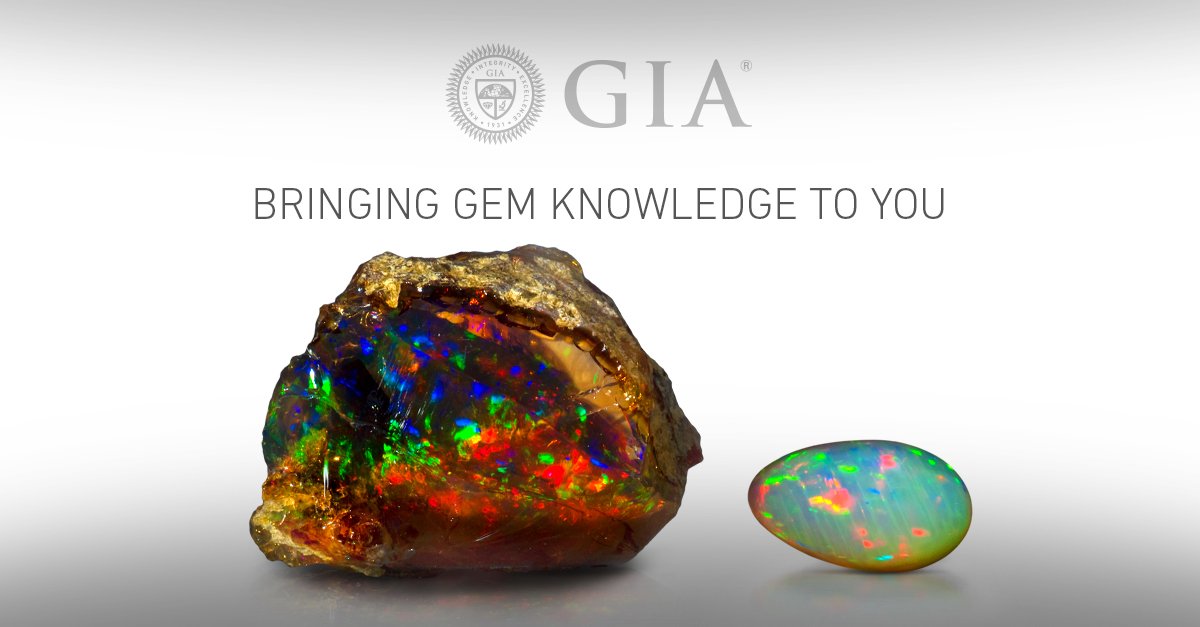10 Need to Know Facts About Opal
1 | Why are opals cut into rounded cabochons without angular flat facets as seen in other types of gemstones?
Opals are cut in rounded cabochons for two reasons, to showcase any visible optical phenomena (ie. the rainbows!) and because opals are a soft gemstone which can make the faceting process difficult. True faceted opals do exist but they are rare and considered collector’s stones
2| What kind of precious opals are out there?
Precious opal usually refers to opals with “play of color”, the optical phenomena that produces dazzling rainbows that dynamically shimmer with changes in light and movement. Precious opal is found in the form of white opals (typically Australian), black opals (Lightning Ridge in Australia is the most famous source), boulder opal (also Australian), wood replacement opal, contra luz (play of color is only visible when light is shined through the opal), jelly (transparent), Ethiopian opal (these are sometimes called hydrophane opals which can absorb liquids changing their color and optical quality but some are relatively stable without issue), and the rare fossil replacement opal. Australia is the main source of high end opal on today’s market.
3 | Are there opals without play of color?
Opal is most famous, beloved, and coveted for its bright holographic looking colors but not all opals display changing colors. Opals that do not have play of color are referred to as potch opal. Famously collectible varieties include pink opal from Peru, green opal from South Africa, and blue opal from the USA. Opals with predominantly orange transparent color are known as fire opals. Mexico is the best known source for fire opal and fine Mexican specimens can still display play of color.
4 | Is opal a birthstone?
Opal is October’s Birthstone along with tourmaline. Together these gemstones offer October babies every color under and in between the rainbow.
5 | What does it mean when you give someone an opal?
Opals are romantic gemstones that carry the mystical power of the rainbow. Many cultures have associated opals with magic over time and and the ancient Greeks believed this gem protected the wearer from disease. In modern times opals signify hope, clarity, and truth. Opals are the traditional 14th wedding anniversary present and a popular gift choice from the parents of the bride, a tradition started by Queen Victoria.
6 | Are opals delicate or breakable?
All opals must be worn with deliberate care as they are less durable than other precious and semi precious gemstones. Opals rank at a 5-6.5/10 on Mohs Hardness Scale meaning they are softer than most gemstones used in jewelry. Their relatively low hardness means opals can easily scratch and break with too much force. Opals also are susceptible to a condition known as “crazing”. Crazing or cracking can happen randomly at any time after an opal gemstone is mined and cut. This unfortunate occurrence can happen years or decades after an opal is set in jewelry. Some opals never craze but there is no way to predict which ones will remain stable. Some museums display their opals in environmentally controlled cases in hopes of preventing crazing. Hydrophane opals from Ethiopia require additional extra care and must not get wet or be exposed to liquids as opals from this locality may absorb the moisture hurting the gemstone’s quality and appearance. These opals are generally less expensive but still fun to wear as long as you treat them like Gremlins.
7 | Should I get an opal engagement ring?
Natural opals are NOT suitable for engagement rings or rings that get heavy wear. We highly recommend considering an opal pendant or earrings as a way to commemorate your special day instead. It’s a great excuse to get another piece of jewelry!
8 | What are opals worth today and are they valuable?
Opal pricing can vary greatly. A buyer can acquire a loose natural opal from anywhere between $45 and $45,000 or beyond depending on the quality, play of color, and usability in jewelry or display.
9 | What are the big myths about opal?
Opals have a few big myths associated with them but the biggest is the one where opals are associated with either very good or bad luck depending on who you ask. Although we do not believe this to be true it is difficult to argue against when considering the nature of crazing and how this can destroy an opal out of the blue. Other myths include that opals formed by lightning during thunder storms, tears from the Greek deity Zeus, or as the physical points of where aboriginal gods touched earth.
10 | Should I own opal jewelry?
Of course, it’s a beautiful and versatile addition to any jewelry box. Opal rings are generally not recommended for every day wear but opal earrings and opal pendants are great options to show your love for this gem. Opals also make fine display specimens if someone does not trust or want to wear opals.

